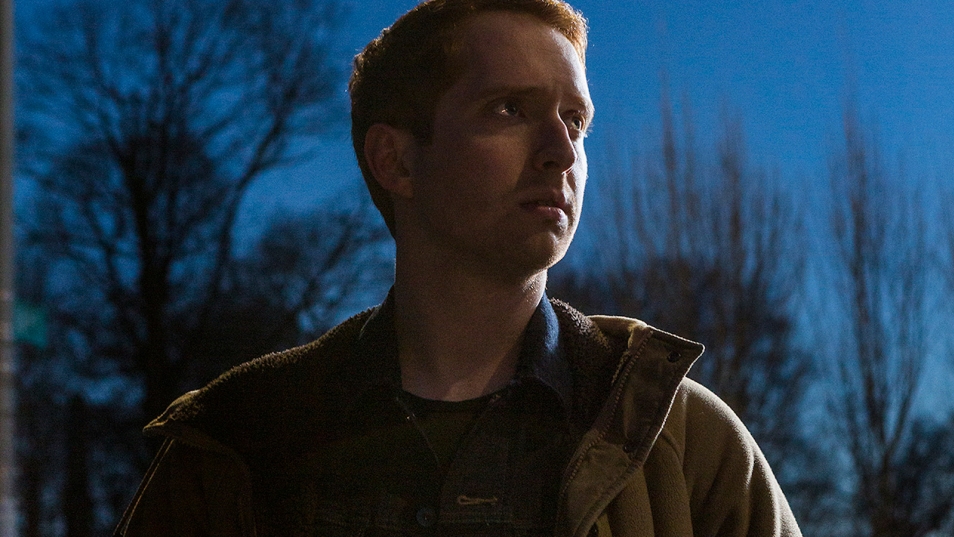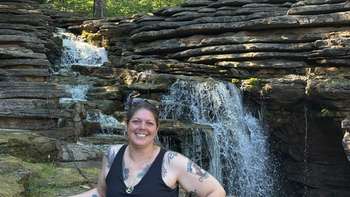Released this March on Furious Hooves, Lamniformes’ Sisyphean is equal parts post-metal soundscape exploration and emotional, striving indie rock. The project is spearheaded by Ian Cory (Gabby’s World, Bellows) but it’s much more than a single person’s artistic vision. Cory composed the material and then recruited friends from Chicago and Brooklyn to flesh it out as a true collective.
SPB caught up with Cory for an in-depth reflection on the creative process behind the six-song album, focusing on how collaboration with his peers shifted the different songs.
Sisyphean Director’s Commentary
When my new album Sisyphean first became available I wrote a lengthy newsletter thanking each of my collaborators for their contributions to the record. While Lamniformes is ostensibly a solo project there enough gaps in my musical ability that I cannot make a record from scratch by myself. I cannot play guitar to save my life, a bit of a problem when making heavy rock music, so in order to make these songs sound the way they should I need to work closely with guitarists and other musicians. Even if I were able to pull off recording the entire record myself, I imagine that I’d still seek out collaborators. I can’t name many examples in my life where bringing in a fresh perspective hasn’t improved the situation, and making Sisyphean is no exception to that rule.
That newsletter was an expression of my gratitude, but because I had a lot of people to thank I didn’t get too deep into the specifics of what each collaborator brought to each song. Today I’d like to approach the subject from another angle. The editors of Scene Point Blank have been kind enough to grant me the space to go through each of the six songs on Sisyphean and point out instances that would not have been possible without a little help from my friends. Think of it as a director’s commentary track for the album. Hell, you can even listen along to Sisyphean while you read this. Enjoy.

“Nothing Ends, Nothing Lasts”
I want to start by talking about Seth Engel, who engineered and mixed Sisyphean. It makes sense to start with Seth because without his work behind the boards none of the other collaborators that I mention in this article would have been able to meaningfully contribute anything to the recording process. In addition, “Nothing Ends, Nothing Lasts” is a great example of Seth’s hard work. Unlike the other songs on the album, which were conceived as songs that a rock band could play from start to finish with very little change in orchestration, “Nothing Ends…” has a multi-act structure where the instrumentation changes pretty drastically from section to section. Balancing those sections and gluing them together was a task that I thrust into Seth’s lap.
There are two moments that I want to point to specifically that Seth helped make possible. First, the organ that serves as the backbone for the first chunk of the song. Speaking objectively, this organ is an unreliable piece of junk. That Seth was able to shape this broken down instrument into the core of the song’s sound honestly blows my mind. Both of us fell in love with this janky ass organ during the sessions for Sisyphean and we kept finding new ways to work it into the album. In the next section of the song, once the rest of the “band” kicks in, we were having a lot of trouble making the lead guitar gel with the rest of the rhythm section. After pulling our hair out combing through a series of unworkable takes, Seth took the unusable guitar parts and built the psychedelic, reversed guitar soundscape that you can now hear on the final version of the song. This was a breakthrough moment for us, and the “backwards” sounds became another tool in our arsenal.
“I Have Been A Flame”
The core of this song came together pretty smoothly, so most of what the other musicians contributed to this song is in the margins. These details are essential to the song’s character. I write all of my music using a midi keyboard and a DAW. Sisyphean was written entirely on Garageband, though I’ve since upgraded to Logic. This means that while much of my music is written with the electric guitar in mind, there are things idiomatic to the instrument that I have trouble capturing in my demos. Mike Lambert and Logan Bloom, the two guitarists on the album, were crucial for making the guitar parts actually sound like guitar parts. The squealing pinch harmonics in the chorus of “I Have Been A Flame” were Mike’s idea, for example. Logan’s lead playing in the song’s “bridge” also required him to experiment with voicings until he found a way to translate my ideas into the sound that we were looking for. It would probably behoove me to learn more about the guitar in the future so I can be more specific in my instructions, but I do like how the current process allows the musicians I work with to inject their own personality into the record.
“Deep Despair In Covington, KY”
The parts of Sisyphean that I’m most proud of are the parts that I was the most worried about being able to pull off before we started recording. At the top of my concerns in pre-production was the lengthy intro to “Deep Despair In Covington, KY.” On paper there’s not a whole lot happening here. Without the right arrangements and production, this intro would feel like a waste of time. Being boring is an unforgivable sin for an album like this, so I stressed out a lot about how this section could go wrong. Thanks to Seth, along with guitarist Terrence Alexander, cellist Daniel Lee, and bassist Parker Langvardt, it turned out to be my favorite part of the album.
We started by using my original midi demo, built entirely out of sounds from Garageband. From there we added live drums and a low bass drone that Parker made using a freeze pedal. Next we took the janky house organ, ran it through a guitar amp and then pitch shifted the recording down an octave. This ended up bringing out a lot of really gnarly sounds from the rotator, almost as if two rocks were being ground together. On the final day of recording, (morbid rock and roll trivia: this also happened to be the day that Chris Cornell died), Daniel and Terrence added their parts to the intro. Daniel layered four separate cello takes on top of each other, starting with a low drone on C and adding each melody line above that. Finally, Terrence used an e-bow to bring out the higher melodies. We originally intended to take out the midi tracks once the other parts had been recorded over it, but we ended up loving the way they interacted with the “real” instruments and the high end sizzle that they added.
.jpg)
“Hypothermia”
One thing that I’ve learned to accept about myself is that I have very strange taste in bridges. “Hypothermia” follows a standard verse/chorus/verse/chorus/bridge/verse/chorus structure, which you wouldn’t expect from its seven minute length. The twist is that the bridge is practically a song unto itself, built on a single repeating guitar part and layers upon layers of harmonies. There’s a long stretch during this bridge where very little is happening harmonically. To keep this section interesting, Seth and I took some stems from “Nothing Ends, Nothing Lasts” that happened to be in the same key as “Hypothermia” and stretched them out until they were unrecognizable. This added a psychedelic touch that kept the repetition interesting. What really took the bridge to the next level was Gabby Smith and Oliver Kalb’s backing vocals. Because Gabby and Oliver live in New York and I was in Chicago during the recording of Sisyphean, I didn’t get a chance to work with them directly. Instead, I had to trust that they would understand what the song needed. That trust paid off, there’s no other part of the album that sounds quite like the moment where their vocals enter.
“Diminisher”
This was the first song that I wrote for the album, so by the time we started recording it there was very little left to change in the arrangement. We probably worked the hardest on the song’s soft middle section, I remember it took us a while to dial in the exact effect we wanted on Logan’s guitar parts. That strange, ringing delay sound isn’t something I would have come up with myself, but luckily Logan is a tone nerd who’s spent a lot of time in math rock bands. It’s always good to have someone like that in the studio when you want to find new and exciting sounds.
“Measured In Rings”
This is another song that required me to trust an out-of-state singer. “Measured In Rings” was written as a message to myself from the perspective of my friends, so it made sense to bring in a friend to sing some of the lyrics. Henry Crawford Henry Crawford was doubly appropriate for the role, since he used a similar lyrical structure on his song “Wind Let Loose.” Henry was originally only supposed to record vocals for the song’s bridge (that’s him singing the “nothing ends…” refrain), but when I got the files back from him he had also recorded a call and response part during the second chorus. What a scamp! I’m glad he did it though, it’s yet another decision that I wouldn’t think to make myself and the song is better for it.







